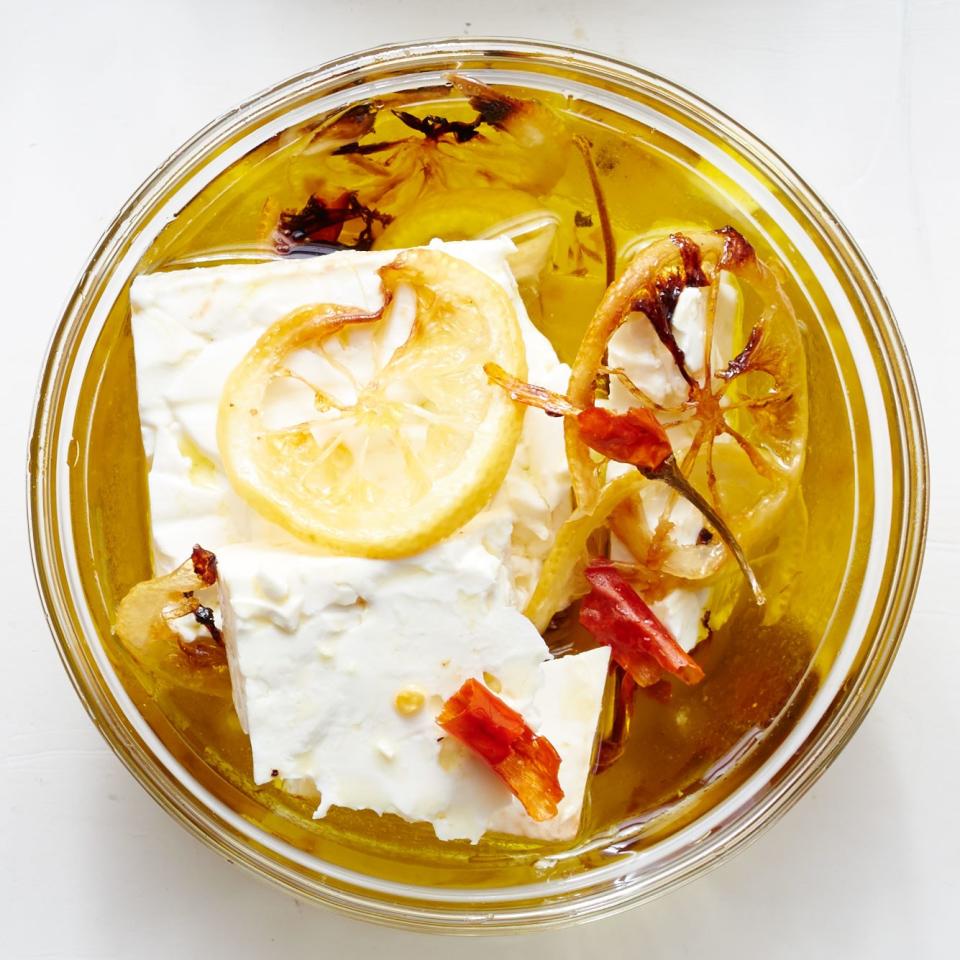All the Types of Feta Cheese You Should Be Eating
When we think of feta, we think of Greece. And while a Greek salad wouldn't be a Greek salad without plenty of everyone's favorite briny, salty, crumbly cheese, the country doesn't have a monopoly on the stuff—far from it. There's a wide world of out there, with so many types of feta cheese to choose from.
Good cheese shops and some grocery stores will offer a few types of feta, differentiated by origin, milk type, and packaging technique. Sheep's milk fetas (the classic option) tend to be sharpest, while goat's and cow's milk versions are milder. But the most useful distinction is the geographical style. These are the three main types of feta you'll see at the store, and what they're best for.
Bulgarian Feta
This is the saltiest type of feta, with a firm yet creamy texture. We're all about slicing it up and dressing it with good olive oil, salt, and pepper. A simple treatment let's the substantial texture and pleasant creaminess shine.
French Feta
Mild and creamy. Those are the qualities that this variety brings to the table. French feta is less briny than its peers, and tends to be a bit softer, so it's great whipped (in a blender, if you have one) and served alongside roasted vegetables or spread onto crusty bread. A hit of dairy will take your roasted cauliflower to the next level.
Greek Feta
This is the stuff that you see most frequently. Greek feta is briny, tangy, and sharp, and the fine texture makes it perfect to crumble in salads, sprinkle on cold soups, or toss into some rigatoni with sausage, beans, and greens. Although it isn't the saltiest, Greek feta packs the most flavor of the three, which makes it a transformative addition to simple, one-dimensional dishes.

marinated-feta-with-roasted-lemon
At the end of the day, though, the most important thing to look for when buying feta is how it's packaged. You should always buy feta in brine. By "feta in brine," we mean the stuff that comes packed in a plastic container full of liquid—in this case, salt water—as opposed to the pre-crumbled or vacuum-sealed varieties. Not only does the brine intensify flavor, elongate feta's life span, and improve its creamy texture, but it's useful as a secondary ingredient. You can use that brine to marinate chicken, thin out whipped feta dips, build flavor in broths and braising liquids, and cook grains and beans. It's a buy-one-thing-get-another-thing-free type of situation, and like feta, it rules.


